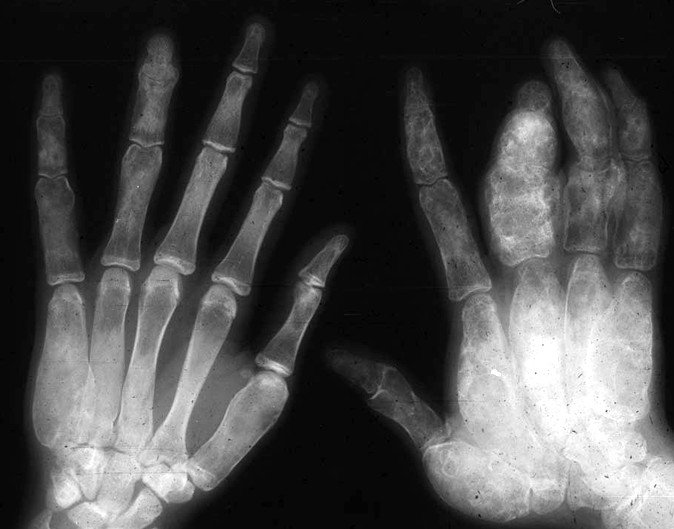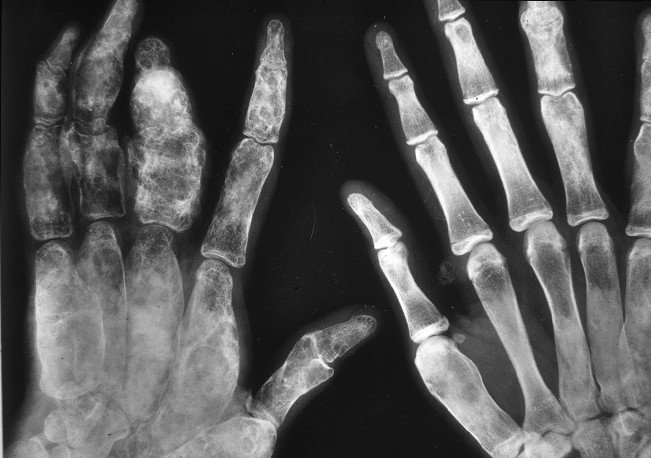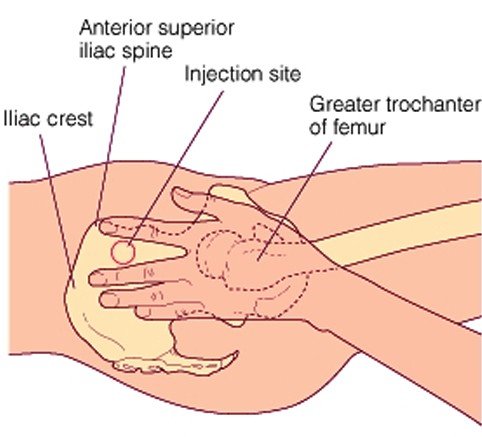Fibrous Dysplasia
What is Fibrous dysplasia?
This is a medical condition that disturbs the process of bone regeneration. It causes normal bone to be replaced with fibrous tissue that is abnormal. It is characterized by a heavy build-up of scar tissue, also known as fibrous tissue, within your bones. This is a very rare medical condition and is not a form of cancer.
Forms of Fibrous dysplasia
There are two forms of this medical condition which are:
- Monostotic fibrous dysplasia – with this type only one bone is affected and accounts for approximately seventy percent of all cases of fibrous dysplasia
- Polyostotic fibrous dysplasia – with this type it affects several bones and is often associated with McCune-Albright syndrome, which is a genetic disorder that affects not only the bones but also many endocrine (hormone producing) tissues and your skin. In addition to fibrous dysplasia this syndrome may also lead to early puberty and skin lesions. Having McCune-Albright syndrome is the most severe form of polyostotic fibrous dysplasia and is seen in approximately three percent of all cases of polyostotic fibrous dysplasia.
Pathophysiology
Although this medical condition starts during the development of the fetus is it not detected until later. It could be detected in childhood or adolescence or even as late as adulthood. As the affected bone continues to grow, the weaker fibrous tissue enlarges and causes the whole bone to become brittle, painful, even deformed, and weak. Fibrous dysplasia can affect any bone in your body. They can also be several bones that are affected at the same time. When several bones are affected it has been observed that they are all located on one side of your body. Fibrous dysplasia does not spread from one affected bone to another.
Some of the bones that are normally affected include:
- Skull
- Face
- Humerus, which is the bone in your upper arm
- Tibia, which is the your shinbone
- Femur, which is your thigh bone
- Pelvis
- Ribs
It can also affect your spinal vertebra but this does not happen that often. Although it can affect any bone it is more commonly found in the long bone in your legs or arms or in your skull.
Symptoms
The symptoms of fibrous dysplasia may be experienced differently by different people but there are some common symptoms that everyone may experience. When people who have monostotic fibrous dysplasia they often do not develop symptoms.
- Due to the expansion of the fibrous tissue there is pain in the affected bone
- Bone deformity
- Fractures of the bone affected
- An abnormal lateral curvature of your spinal column called scoliosis. This can result in someone seeming to lean towards one side
- A tottering walk
- Nerve entrapment
When a person has these symptoms, especial the fractures, bone pain, and bone deformities, begins in early childhood, usually by the age of ten. The tottering walk is often experienced by people who have polyostotic fibrous dysplasia when their pelvic, tibia, or thigh bones are affected.
Causes
Because the medical condition develops during the fetal stage its occurrence has been associated with a mutation of a gene that affects the cells that make your bones. It is not known exactly what causes this mutation but it is known that it is not a hereditary disease but happens spontaneously. The gene that mutates is referred to as the GNAS1.
Even after you stop growing bones continuously renew themselves. In this renewal process there are particular types of bone cells called osteoclasts that reabsorb bone minerals or break down the bone. There are also other types of bone cells that build it up again called osteoblasts. When fibrous dysplasia affects a bone it causes a disruption in this process and results in old bone breaking down at a faster rate than the rate which it was built. To be able to cope with this your normal bone tissues gets replaced by weak, soft fibrous tissue.
Diagnosis
The preliminary diagnosis is usually made on the basis of the symptoms you might be experiencing such as recurrent bone fractures and bone pain. To confirm a diagnosis of fibrous dysplasia the physician will order imaging tests like MRI scans and x-rays. These imaging tests can help pinpoint the location of the bones that are affected along with any bone deformities that could have developed. Your physician may also order a bone scan, which uses radioactive tracers injected into your bloodstream. The parts of your bones that are damaged will take up more of these tracers and show up brighter on the scan so they can see which bones and how much is affected.
Treatment
At this point there is no known cure for fibrous dysplasia so the treatment mainly involves relieving any symptoms that you are experiencing. If there are no symptoms then the medical condition is just observed with periodic x-rays taken. If the x-rays show that the medical condition is not progressing then there is no further treatment needed. Sometimes your physician will have you use a brace in order to prevent the affected bone from fracturing but the brace may not be able to prevent the bone from becoming deformed. If the x-ray shows that the medical condition is progressing it is usually then treated with medication and surgery.
Medication
The medications that are used to treat progressing fibrous dysplasia are called bisphosphonates, which help to slow down the breakdown of the bone, increase the density of the bone in your spine and hip, and maintain bone mass. This will help to lower the chances of the bone fracturing. Not much is known about how this medication affects children and adolescents with fibrous dysplasia but it is thought that it may help to relieve pain.
The medication is normally used in adults to help increase the density of your bones and to treat osteoporosis. Sometimes the medication can even help improve the formation of bone and help to reduce the pain. Two of the types of the bisphosphonates medications used are Alendronate and Pamidronate. This medication is taken orally but it also available in intravenous injections. This is for those that cannot tolerate the oral type because of gastrointestinal irritation. Your physician may also have you take over-the-counter anti-inflammatory medication and analgesics or give you a prescription for them to help with the pain. Your physician may also have you do pain management therapy.
Surgery
When doing surgery it can include the excision of the affected area of the bone and may be followed by bone grafting. This is where a healthy bone from another area of your body is transplanted into the area affected by this medical condition. Unfortunately over a period of time this grafted bone is absorbed and replaced with fibrous tissue. The surgeon can also stabilize the affected bone with the help of a rod that is placed inside the bone along with plates and screws. This procedure can be useful in fixing a fracture or deformity. It can also help prevent the bone from breaking. Surgery may also be done to relieve pressure on a nerve, especially if it is a facial or skull bone that is affected.
Complications
Although fibrous dysplasia does not usually cause any complications besides bone fractures or deformities in severe cases of fibrous dysplasia you may see complications that can include:
- Hearing and vision loss – if the nerves to your ears and eyes are surrounded by an affected bone(s) and the facial bones become severely deformed it could lead to loss of hearing and vision but it is a complication that is rare.
- Arthritis – if your pelvic and leg bones are deformed you could have arthritis form in the joints of these bones.
- Cancer – although this rarely happens it is possible that an affected area of the bone could become cancerous but is a complication that usually affects only people who have had prior radiation therapy.




